No juicer? No problem! Skip the pricey store-bought green juices and whip up your own version with this simple trick for how to make green juice using a blender. Plus, discover creative ways to work the nutritious pulp into your next dish.
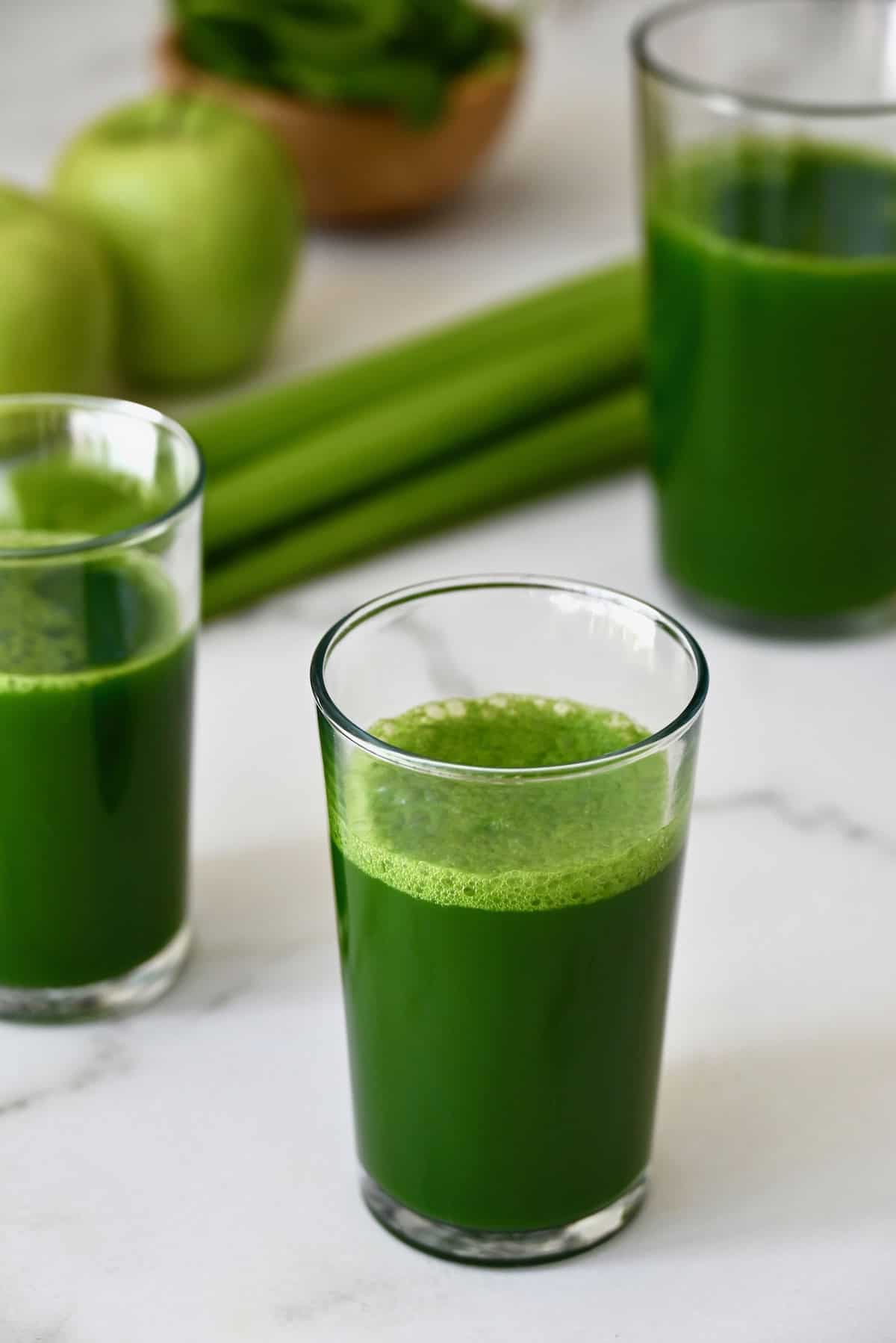
Table of Contents
Every spring, I like to get ready for summer (aka shorts and swimsuit season!) by eating healthier and ramping up my workout routine. This year, I’m going green with a lean, mean glass of green juice loaded with kale, apples, parsley, cucumbers, celery, ginger and a squeeze of fresh lemon juice. Sound refreshing? It is — and it’s chock full of vitamins, antioxidants, nutrients, and other beneficial ingredients.
But when I walked into my local juice shop to get my juice fix, I was surprised to discover that a green juice cost more than $10! The sticker shock — in addition to your requests for a recipe after I posted a photo of the juice on Facebook — led to a DIY take on healthy green juice that doesn’t require a fancy juicer or special attachment. This quick and easy recipe is made in a blender, giving you the option to strain the juice for a thinner consistency, or, just start slurping, hearty pulp and all.
Why You’ll Love It
- No expensive juicer required. This DIY green juice recipe uses a regular blender.
- Quick and easy. Nutrient-rich green juice can be ready in a matter of minutes.
- Satisfies daily veggie requirements. A lot of vegetables and fruit can be packed into a single glass, so kids and adults who are short on veggies can sip their daily quota.
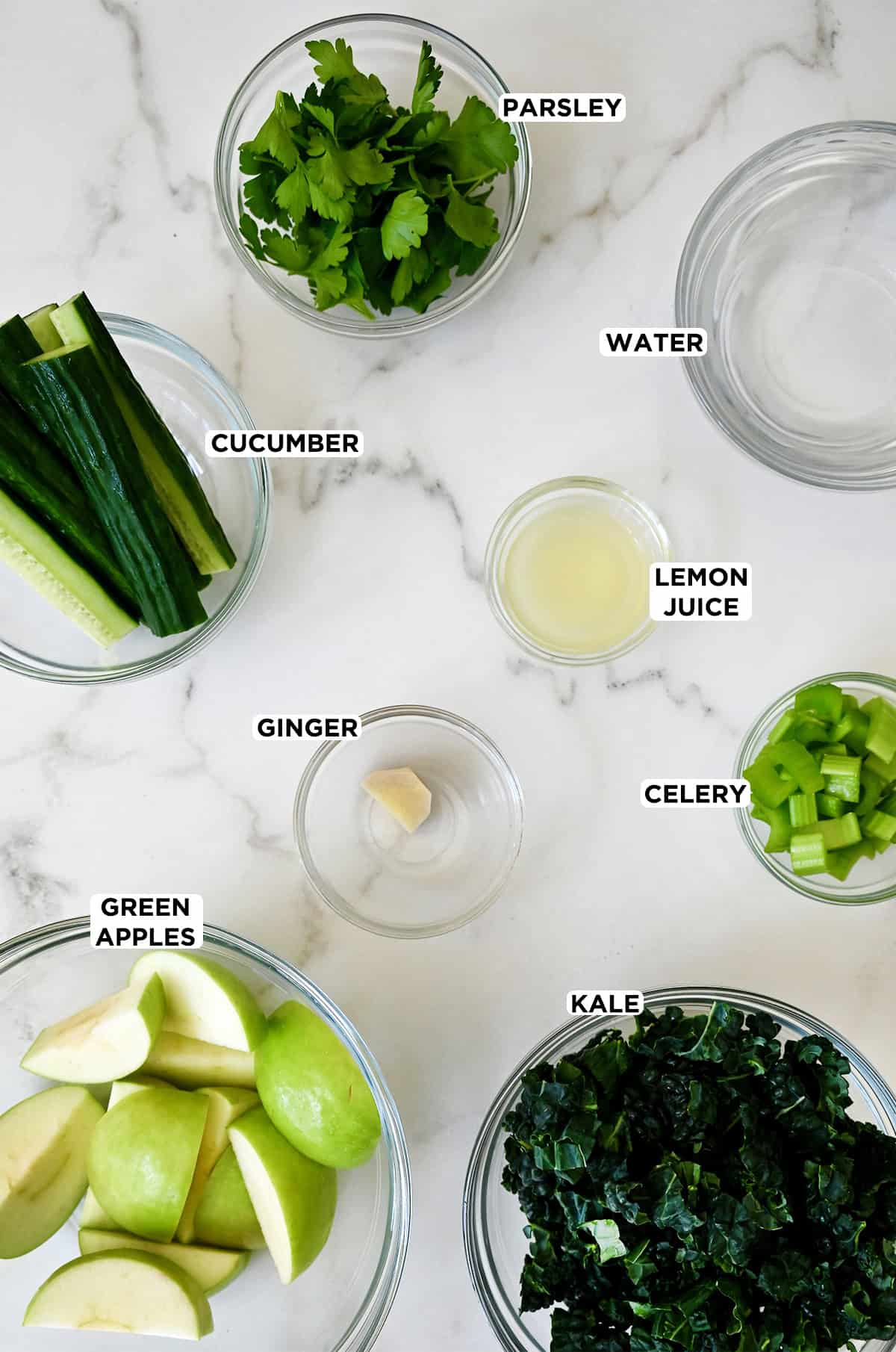
- Kale: For convenience, I use prewashed chopped kale that comes in a bag. Don’t worry about the bits of stems — the blender will take care of that! Leftover kale is great in a Caesar salad.
- Green apples: You can use any apples you have on hand but I prefer the tangy flavor and juiciness of Granny Smiths.
- Parsley leaves: Curly or flat-leaf (Italian) parsley both work great. Again, stems are OK, as they’ll get blended in.
- Cucumber: Choose cucumbers that are wrapped in plastic; they won’t have the waxy coating that unwrapped cukes have. You’ll want to leave the skins on, as that’s where a lot of the fiber and nutrients are.
- Celery: Use a vegetable scrubber to get all the dirt that collects in the grooves of the celery stems.
- Ginger: For easy peeling, use the edge of a spoon to scrape the peel off ginger root.
- Lemon juice: To get the most juice out of a lemon, roll the whole lemon back and forth across the counter while pressing down. This will break down the membranes and help release juice.
See the recipe card for full information on ingredients and quantities.
The beauty of blender juicing is that variations are nearly infininite. You can use my basic formula to substitute your favorite ingredients. Here are some other ingredients that work to add or sub into your green juice.
- Leafy greens: Don’t like kale? Other leafy greens that work include spinach, bok choy, Swiss chard, arugula and beet greens.
- Fresh fruit: Try peeled pineapple, peeled orange segments, peeled mango, pitted peaches, or cored pears in place of or in addition to the apples.
- Citrus: Try lime juice or grapefruit juice in place of lemon juice.
- Add water to blender. Blenders need a liquid to process the ingredients. If at any time the ingredients aren’t moving around the blender, a splash of water will do the trick.
- Add remaining ingredients. Put the leafy greens on the bottom so the other ingredients will weigh it down, forcing it to make contact with the blade.
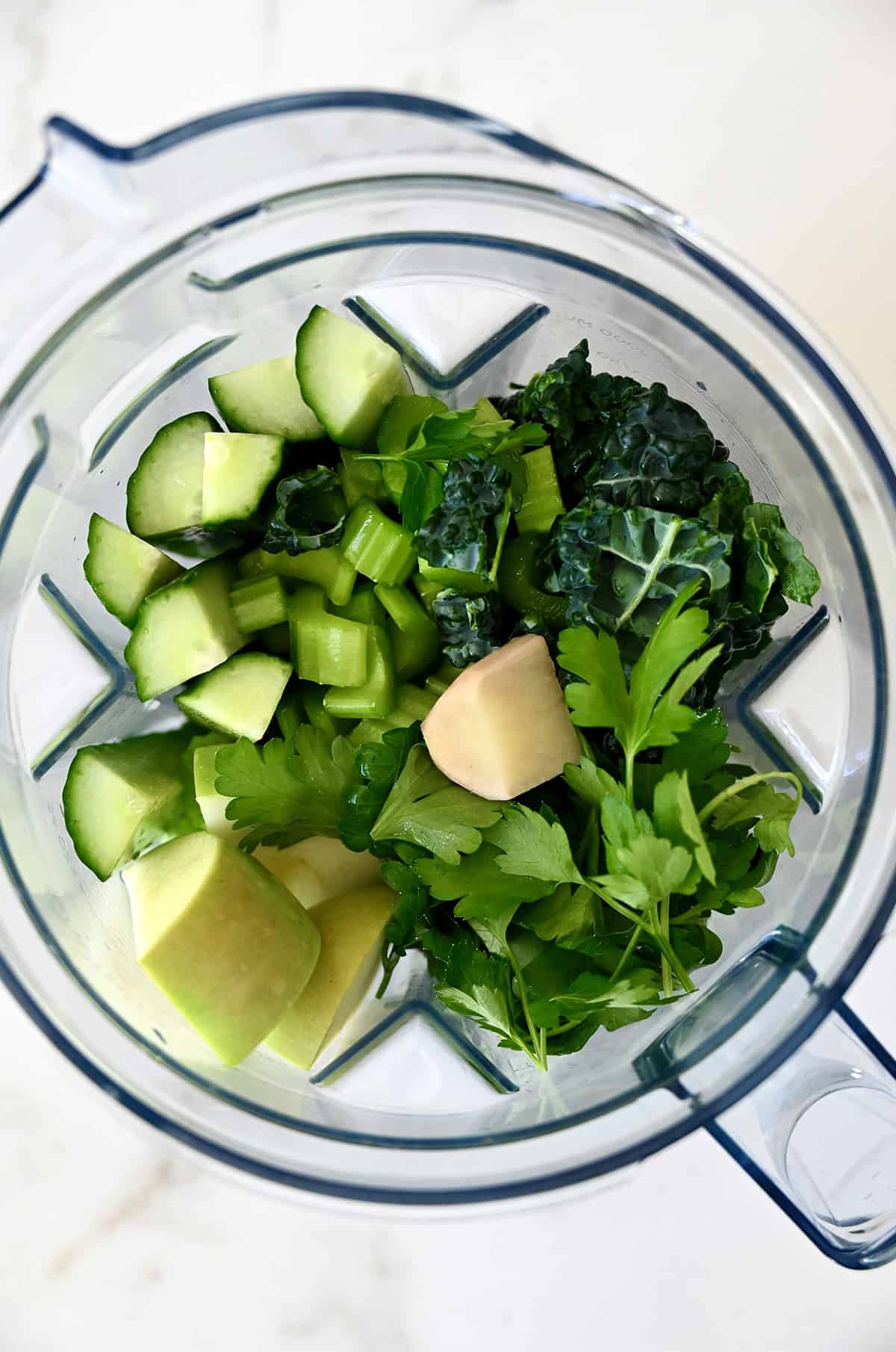
- Blend the ingredients. Run the blender just long enough to puree all the ingredients. If you run it too long, the juice will heat up.
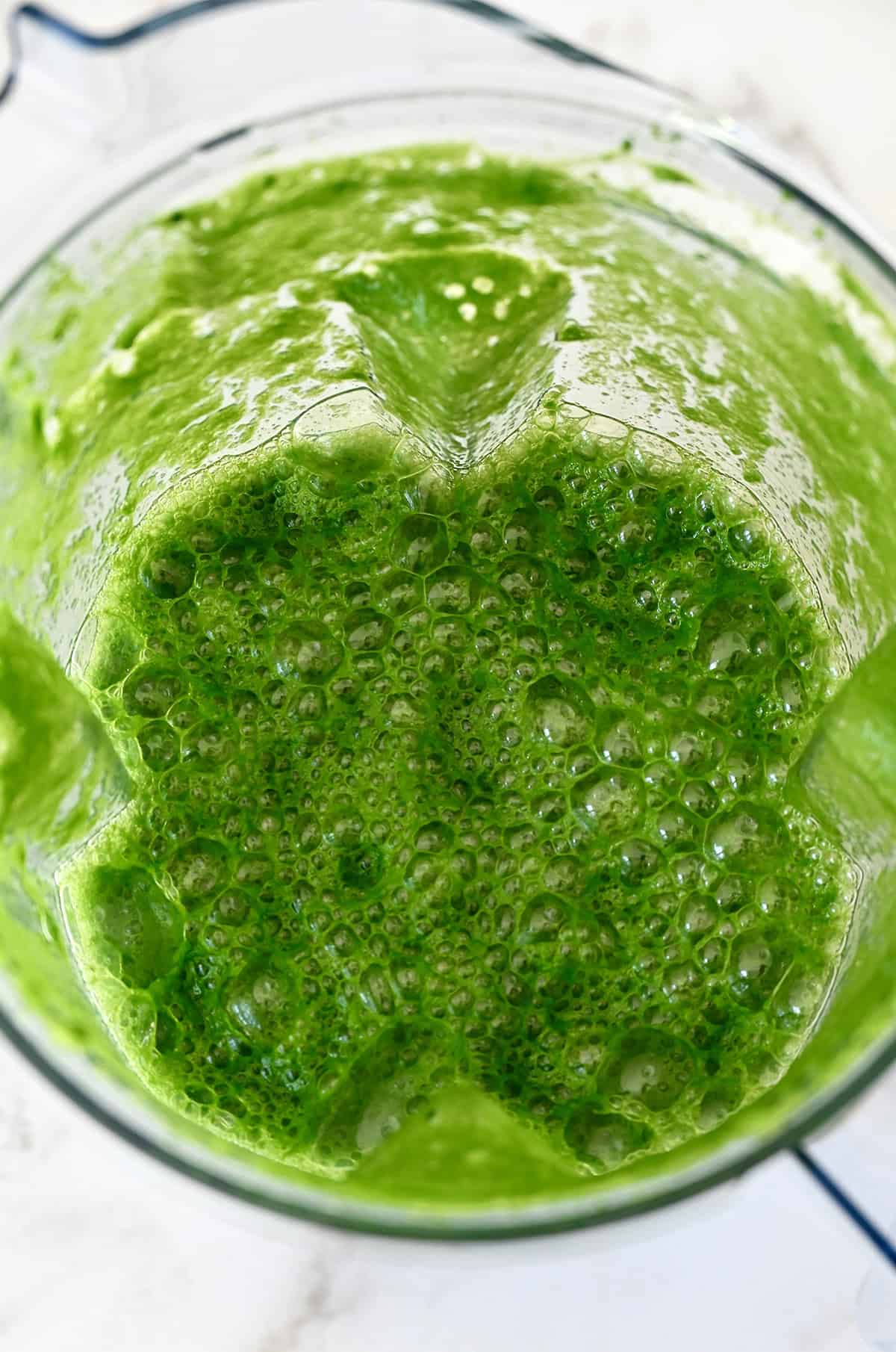
- Strain the juice. The juice will have the consistency of a smoothie and can be drunk as is, or strained for a thinner consistency. Use a fine mesh sieve or a cheesecloth set over a bowl to strain out the thick pulp, using a rubber spatula to press the pulp so all the juice is extracted.
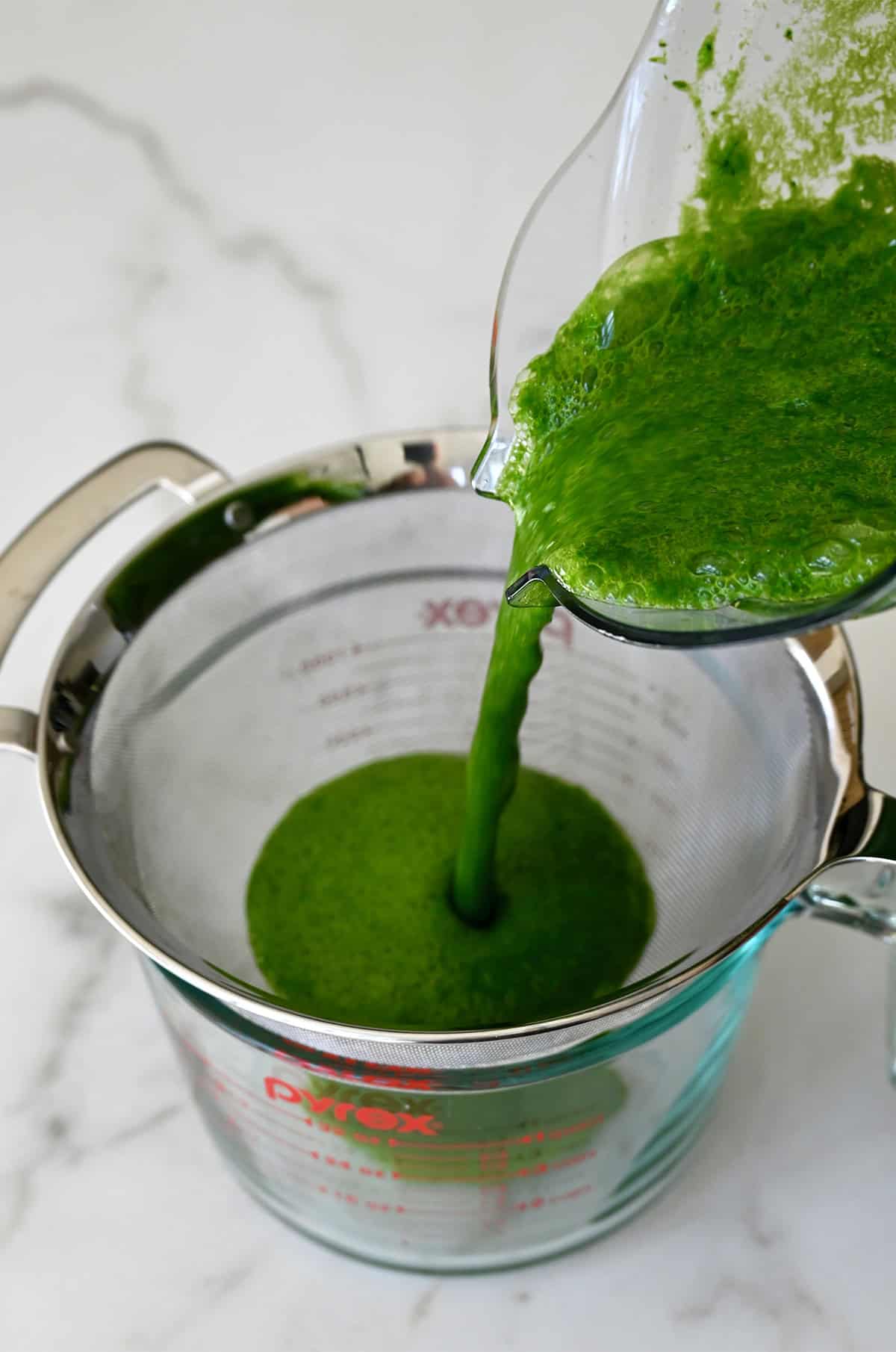
Pro Tip: To clean your blender, fill it with a few inches of warm water and a drop of dish detergent, put the lid on, and blend for 10 seconds, then rinse. Do this right away — if pulp is allowed to dry on the blender jar, it’ll be more difficult to clean.
Blender Green Juice Video Tutorial
Ways to Use Leftover Juice Pulp
If you strained your juice, don’t throw away all that pulp! It’s chock-full of nutrients and fiber, and can bulk up a wide range of recipes. Stir some of the pulp into batters like quick breads, muffins or pancakes. Sneak it into cookies (it can be substituted for the zucchini in my Zucchini Oatmeal Chocolate Chip Cookies). Or blend it with cream cheese to make your own veggie cream cheese spread. The pulp can also be stirred into soups and stews or mixed into marinara sauce for pasta.
The leftover pulp will keep in an airtight container in the refrigerator for 1 to 2 days, or you can portion it out using an ice cube tray, freeze it, and store the cubes in a freezer bag until needed.
- Use cheesecloth to strain. Fine mesh cheesecloth is one of the most effective ways to separate the pulp from the juice. Pour the juice into a cheesecloth set over a bowl, then lift up the corners of the cheesecloth and twist and squeeze the bundle.
- If the ingredients aren’t moving around in the blender, try adding more water or stopping the motor and scraping down the sides.
- If you’re going to experiment with ingredients in your green juice recipe, stick with leafy greens and soft, juicy fruits and vegetables or produce with a high water content. Hard, dense vegetables like carrots, beets or sweet potatoes will not liquify as well and you’ll be left with hard chunks in your juice.
Green juice is best consumed right when it’s prepared, but it will last in the refrigerator for 24 to 48 hours in an airtight container. After this time the juice may begin to oxidize.
To freeze green juice, pour it into a glass jar (a large mason jar works great), leaving about an inch of space to allow for expansion, screw the lid on tightly, and freeze for up to 3 months. Defrost overnight in the refrigerator.
Another freezer option is to turn your juice into a green juice popsicle by pouring the blended juice into popsicle molds.
Frequently Asked Questions
No. Most fruits and vegetables can be blended with their peels intact. The peels, in fact, contain a high concentration of nutrients so it’s better to leave your fruits and veggies unpeeled.
If you want a sweeter green juice, Increase the amount of naturally sweet ingredients, and use a milder leafy green, such as baby spinach or romaine. Using sweeter apples and adding fruit like pineapple, mango, or peeled orange segments will make green juice sweeter. Still not sweet enough? Try adding a little honey or agave nectar.
Blending will not destroy the nutrients in fruits and vegetables. For your green juice to be its most nutritionally beneficial, leave the peels inatact, drink it right away and don’t strain out the pulp.
- Secret Ingredient Smoothies
- Healthy Breakfast Cookies
- Freezer-Friendly Egg White Muffins
- Healthy Taco Zucchini Boats
- Creamy Edamame and Pea Hummus
- Quinoa Breakfast Bowls
Craving more? Subscribe to Just a Taste to get new recipes, meal plans and a newsletter delivered straight to your inbox! And stay in touch on Facebook, TikTok, Pinterest and Instagram for all of the latest updates.
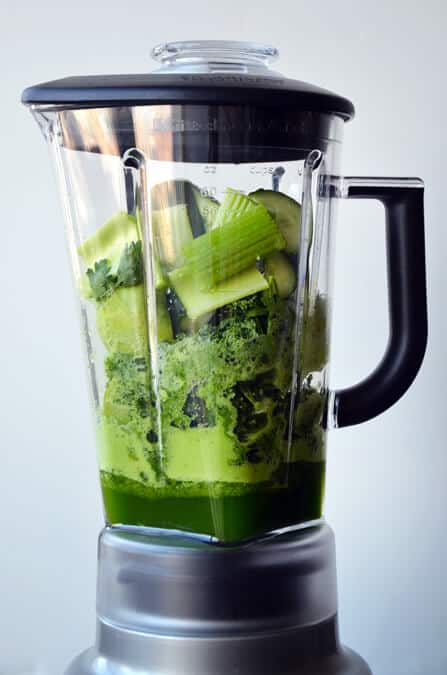
Ingredients
- 1 1/2 cups water
- 2 cups kale
- 2 green apples, cored
- 1/2 cup parsley leaves
- 1 medium cucumber, quartered
- 2 celery ribs, roughly chopped
- 1 (1-inch) piece of ginger, peeled
- 2 Tablespoons lemon juice
Equipment:
- blender; fine mesh sieve (optional)
Instructions
- Add all of the ingredients into the blender jug in the order in which they are listed. Blend the ingredients on the highest level setting, such as “liquefy,” until the juice is well-blended. (It will be the consistency of a smoothie.)
- If you want to enjoy the pulp with your juice, pour the mixture into glasses and serve. If you prefer a thinner consistency, pour the mixture through a fine mesh sieve, and using a spatula, press the pulp into the sieve to extract as much liquid as possible. Pour the strained juice into glasses and serve.
Kelly’s Notes
- Cheesecloth is one of the most effective ways to separate the pulp from the juice. Pour the juice into a cheesecloth set over a bowl, then lift up the corners of the cheesecloth and twist and squeeze the bundle.
- If the ingredients aren’t moving around in the blender, try adding more water or stopping the motor and scraping down the sides.
- Stick with leafy greens and soft, juicy fruits and vegetables or produce with a high water content. Hard, dense vegetables like carrots, beets or sweet potatoes will not liquify as well.
- ★ Did you make this recipe? Don’t forget to give it a star rating below!
Nutrition
Shoutout
Did you try this recipe?
Share it with the world! Mention @justataste or tag #justatasterecipes!
This post may contain affiliate links.
Recipe by Kelly Senyei of Just a Taste.
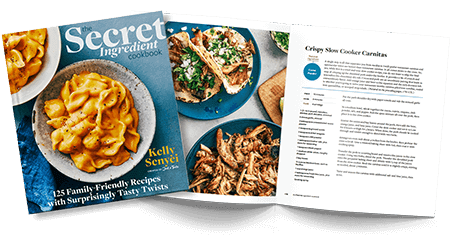
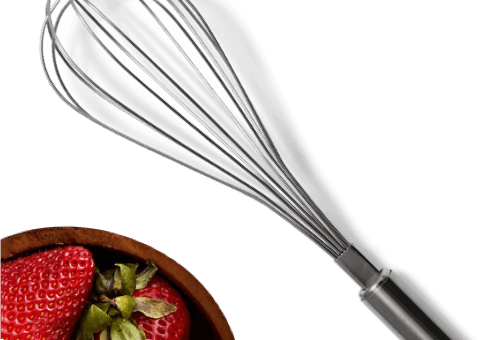
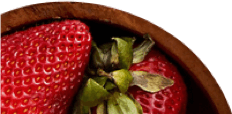
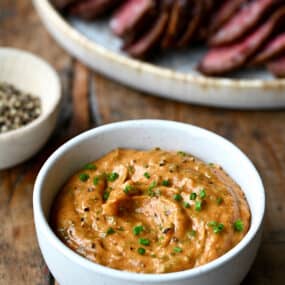
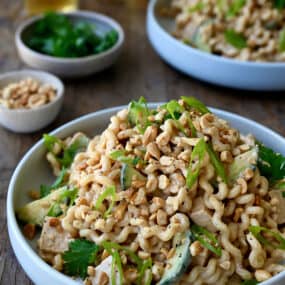

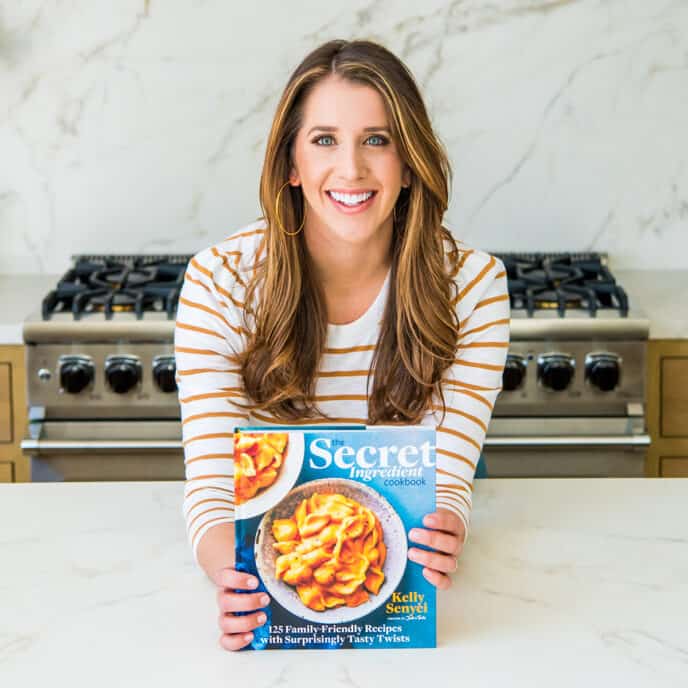
Very simple & tastes as good as any store bought juice.
I’m thrilled you enjoyed the recipe, Wil!
Love this recipe. If you chose to remove the pulp and strain it, don’t throw it away, never throw it away. Its full of so many vitamins. Instead put it in a jar and freeze it(not a plastic bag, they are wasteful and unnecessary) then you can put it in muffins, pancakes, oatmeal really anything, or add it to a smoothie. If you making an carrot apple orange juice then make carrot cake with the pulp. It it prevents food waste. If you really can’t do anything with it compost it. I know some people live in apartments but there are tons of ways to compost in an apartment.
Great tips! I’m so glad you’ve been enjoying the green juice :)
Just tried making this for my family and it’s amazing! Thrilled to not need a juicer to make healthy juice at home. Thank you!
You are so welcome, Destiny! I’m thrilled you enjoyed the recipe!
Thank you so much for this recipe!
I used spinach instead of kale and it tasted just lovely (pulp included).
I actually left half in the blender and put it in the fridge overnight. In the morning I put a few ice cubes, berries, half a banana and vegan protein powder in it and reblended. Was amazing! Next time I might actually freeze 1/4 of in an ice cube tray and use in my smoothies!
Amazing! I’m so thrilled you enjoyed the recipe, Janine!
How long can it last in the fridge after I blend it? Before it’s not drinkable
Hi there! It’s definitely best fresh, but you could store it in the fridge overnight.
Its a good site
I’m so glad you’re enjoying Just a Taste, Tiann!
What do you do with the pulp?
Hi Edgar! I like to whip it into cream cheese to make veggie cream cheese. :)
I’m a newbie to juicing and alkaline diet. I did omit one apple and one celery. It came out like a smoothie and not a yucky taste. I also kept it the thick consistency and plup. I need all the extra vitamins I can get.
Thank you for this simple recipe.
You are so welcome, Lydia! I’m thrilled you enjoyed the recipe!
Can you store green juice right after blending it on Mason jars if so for long can it be refrigerated before having to dispose it?
Hi Glenda! It’s definitely best fresh, but you could store it in the fridge overnight.
May I add bok Choy?
Absolutely!
Kelly,
I have been drinking this concoction for a week now. Love it! I have been drinking it strained through my mesh colander, which gives me a bit of pulp, not full on pulp. Do yo you have any information on a caloric intake # for a 12 oz. glass, which is what I have been drinking daily.
Hi Debra! Unfortunately I don’t have specific nutritional information for a 12-ounce glass, however, you can find the estimated nutritional info for one serving by clicking on the purple button below the recipe that says ESTIMATED NUTRITION INFORMATION.
Thank you, I was looking for a simple recipe, without using a power.
Can you use frozen kale, or does fresh work better?
That should work!
Gotta grip of kale, swiss chard, and collard greens! Can’t wait to start juicing!
Enjoy!